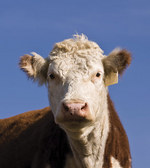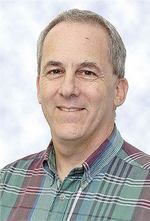How one cow will change the world's food supply
 Molecular Science Molecular Science
A US$52 million international project to sequence the genetic blueprint of a female Hereford cow will revolutionise the world's dairy and beef cattle industry. That's according to genome expert Professor David Adelson from the University of Adelaide, who is one of more than 300 researchers from 25 different countries who have spent six years mapping the bovine genome, the first mammalian livestock animal in the world to be sequenced. The results of the project were published last month in the internationally prestigious journal Science. Professor Adelson, Chair of Bioinformatics and Computational Genetics at the School of Molecular and Biomedical Science, said the genetic sequencing of "Dominette" would pave the way for more sustainable food production around the world. "This will have a significant impact on genetic selection for dairy production, for meat production and for food efficiency," he said. "It will mean that livestock producers will not only be able to breed superior animals but they will be able to assess the genetic potential of the animals they have." The authors of the paper said the bovine genome, containing between 22,000 and 26,835 genes, was more similar to that of humans than mice or rats, although the DNA of cattle chromosomes is rearranged in some areas. "During evolution, domesticated cattle and other mammals diverged from a common ancestor that gave rise to humans about 95 million years ago, yet cattle and humans still share a high degree of commonality in the organisation of their chromosomes." The knowledge gleaned from sequencing a single Hereford cow could lead to more efficient beef and milk production, Professor Adelson said. He said the cattle and dairy industry would soon be able to use a relatively cheap test, costing several hundred dollars, to assess the genetic potential of their animals at birth. "This will tell them which livestock will produce superior meat or milk output without investing too much money to improve their condition. "With the right kind of genetic testing, dairy producers in particular will be able to predict - with a high degree of accuracy - the animal's genetic potential. This will speed up and lower the cost of their genetic improvement programs considerably," he said. Professor Adelson started work on the sequencing project in 2003 as a consortium member of the Baylor College of Medicine Human Genome Sequencing Centre in Texas, which has led the international project. He joined the University of Adelaide in 2007 and has led one of the key teams analysing the sequencing data for the past 12 months. Dr Stefan Hiendleder from the University's Roseworthy Campus is also a co-author on the manuscript for his work on annotating imprinted genes. Story by Candy Gibson
|





